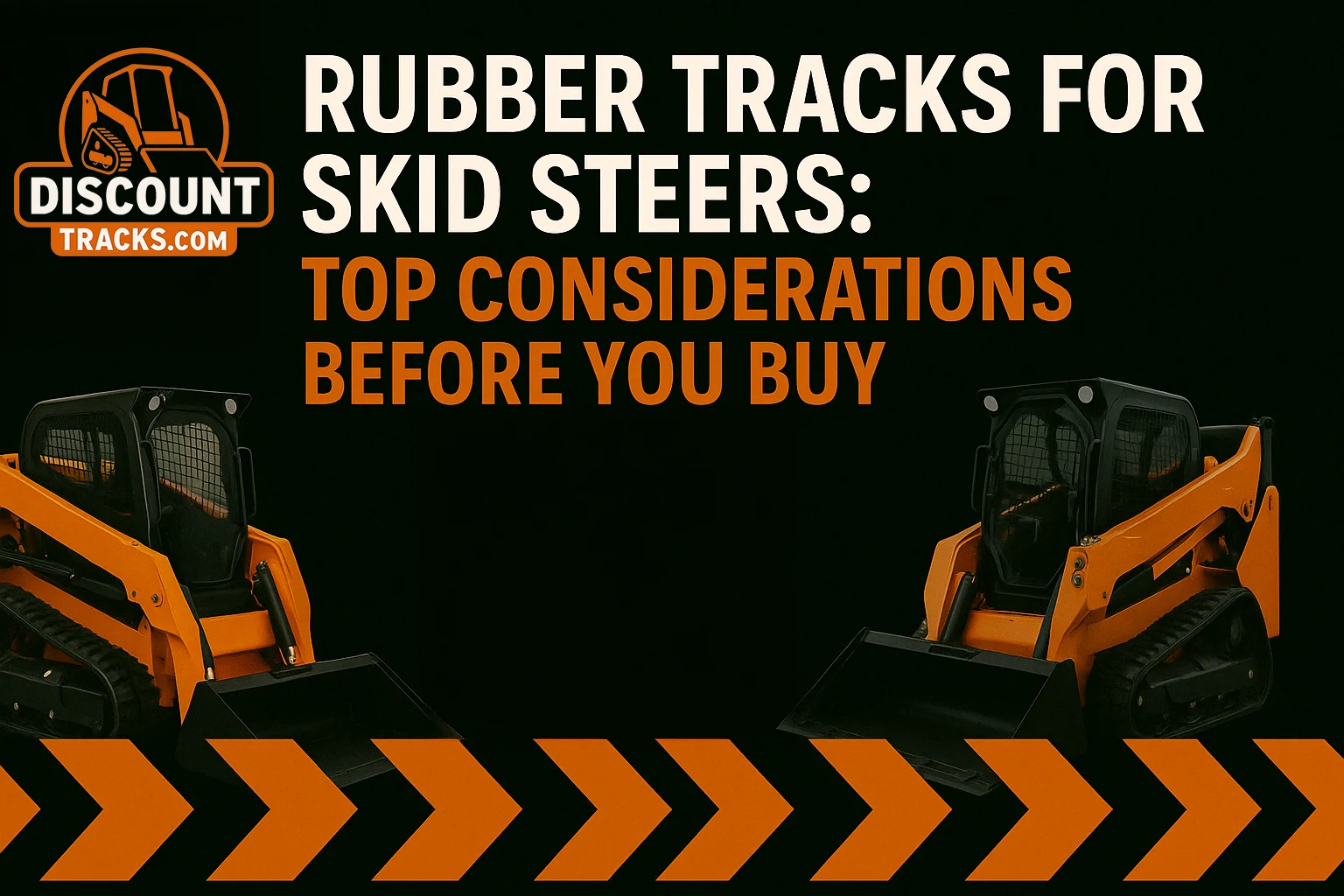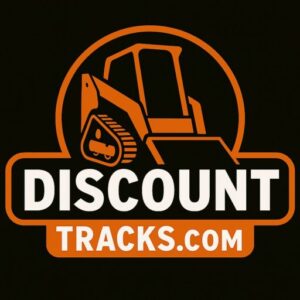Skid steers are true workhorses—compact, powerful, and incredibly versatile. But their performance is only as good as the tracks they’re running on. Whether you’re grading pavement, clearing brush, or working on a muddy jobsite, your skid steer tracks play a critical role in traction, stability, and machine lifespan.
Buying replacement skid steer tracks isn’t always straightforward. With a wide variety of tread patterns, materials, and pricing levels, making the wrong choice can cost you time, money, and productivity.
This guide breaks down the top considerations to help you choose the best rubber tracks for your skid steer—ensuring long-lasting performance and real value. Let’s dive in.
Why Choosing the Right Skid Steer Tracks Matters
The right tracks don’t just move your machine—they directly impact:
- Traction & Pushing Power: Essential for moving material and navigating tough terrain.
- Stability & Load Carrying: Especially important with attachments like buckets, forks, or augers.
- Operator Comfort: Tracks affect vibration levels and ride smoothness.
- Surface Protection: The wrong track can tear up turf or leave marks on pavement.
- Undercarriage Wear: A poorly fitted or low-quality track can damage rollers, sprockets, and idlers.
- Uptime and Efficiency: Durable tracks keep your machine running longer with less downtime.
Consideration 1: Getting the Correct Track Size
Track size is the foundation of a proper replacement. Without the right fit, even the most premium track will fail prematurely.
- Most skid steer tracks are labeled using the format: Width (mm) x Pitch (mm) x Links (count).
- Look for the stamped size on your current track or check your machine’s specs.
- If in doubt, you can manually measure—track width, pitch (distance between lugs), and number of links.
Need help measuring? Check out our full guide: How to Measure Your Rubber Tracks for Accurate Replacement
Consideration 2: Matching Tread Pattern to Your Application
Your skid steer works in a wide range of conditions—and choosing the right tread pattern is crucial.
Block Pattern
- Best for: Pavement, gravel, hard-packed soil
- Pros: Long-lasting, smooth ride, excellent on hard surfaces
- Cons: Can clog with mud, less aggressive grip
C-Lug / Offset Block Pattern
- Best for: Mud, loose soil, off-road terrain
- Pros: Great traction, self-cleaning design
- Cons: Slightly rougher ride on pavement, may wear faster on hard surfaces
Staggered Block Pattern
- Best for: Mixed-use environments
- Pros: Balanced performance and comfort
- Cons: May not last as long on abrasive surfaces
Turf-Friendly Pattern
- Best for: Landscaping, lawns, sensitive surfaces
- Pros: Minimizes surface damage
- Cons: Limited grip in wet/muddy areas
Pro Tip: Match the tread to your primary jobsite. For instance:
- Hard surfaces: Go with block patterns.
- Dirt or loose terrain: Choose C-lug.
- Versatile conditions: Try staggered block.
- Landscaping/turf: Use turf-friendly.
Consideration 3: Evaluating Track Quality and Durability
Skid steers put serious stress on tracks. Quality matters.
What to look for:
- Rubber Compound: Should resist cutting, tearing, and chunking—especially during tight turns.
- Steel Cables: Continuous steel cords offer better strength and stretch resistance.
- Metal Embeds: Properly bonded, forged metal inserts prevent de-tracking and early failure.
For more details, read our in-depth guide: Understanding Rubber Track Quality: What to Look for Beyond Price
At Discount Tracks, we source durable skid steer tracks with premium materials and manufacturing processes—so they last.
Consideration 4: Understanding Your Operating Environment
Different work environments wear out tracks in different ways.
- Abrasive Surfaces (concrete, demolition, asphalt): Choose tougher compounds and block-style patterns.
- Soft Ground (mud, sand, soil): Prioritize aggressive traction (C-lug), even if the compound is slightly softer.
- Mixed Use: Look for a compromise—staggered pattern with a balanced rubber blend.
Understanding your jobsite conditions helps you make smarter buying decisions.
Consideration 5: Budget vs. Long-Term Value (Cost-Per-Hour)
Don’t let price alone be the deciding factor.
- A cheap track that fails quickly has a higher cost-per-hour.
- A high-quality aftermarket track lasts longer and performs better—without the inflated OEM price.
Discount Tracks provides affordable skid steer tracks that deliver real-world performance and ROI.
Consideration 6: The Importance of Warranty
A solid warranty is a sign of track quality and manufacturer confidence.
- Look for clear warranty terms (length, prorated vs. full replacement).
- Understand what’s covered: manufacturing defects vs. normal wear.
Why Discount Tracks for Your Skid Steer?
Here’s why we’re trusted by skid steer operators across industries:
- Durable Construction built to handle demanding jobsite stress
- Pattern Options for every application: C-Block, Block, Bar, and more
- Competitive Pricing that doesn’t sacrifice quality
- Knowledgeable Support from people who understand compact equipment
- Extensive Inventory for all major skid steer brands and models
Conclusion
Choosing the right skid steer tracks isn’t just about what fits—it’s about what performs. From size to tread pattern to track durability, the right track will boost your productivity, protect your undercarriage, and save you money over time.
Ready to upgrade? Browse our vast selection of skid steer tracks. Still unsure? Contact our expert team for help picking the perfect track for your machine and your job.


